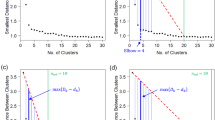Abstract
It is very important to estimate the waves generated by a small vessel so as to investigate their effects on floating bodies within the scope of fisheries and ocean engineering. Simplified methods for estimating the wave heights and periods of ship waves have been presented in previous studies. However, estimating the direction of ship waves is not easy. The focus of the present study is to develop an analytical technique to determine the direction of ship waves based on the measurements in field experiments. The multiple signal classification (MUSIC) method is newly proposed for determining the direction of ship waves. For high ship speeds, the directional spectrum of ship waves estimated by MUSIC resulted in a sharp monotone peak, and the estimated directions of ship waves were very similar to the results of field experiments using an actual small vessel. The proposed MUSIC method has thus been confirmed to be effective in estimating ship wave directions with high resolution.










Similar content being viewed by others
References
Dawson CW (1977) A practical computer method for solving ship-wave problems. In: Proceedings of the second international conference on numerical ship hydrodynamics, University of California, Berkeley, pp 30–38
Shiotani S, Kodama Y (1995) Numerical simulation of viscous flow with free surface around a ship model. In: Proceedings of the international conference on computational engineering science, vol 2. ICCES Organization, Mauna Lani, Hawaii, pp 838–843
Shiotani S, Kodama Y (1998) Numerical analysis on free surface waves and stern viscous flow of a ship model. J Mar Sci Technol 3:130–144
Shiotani S, Fujitomi N, Saito K, Ishida H (1996) Measurements and simplified estimation methods of ship waves due to small vessels. In: Proceedings of techno-ocean ‘96 international symposium, Techno Ocean 96 Organizing Committee, Kobe, Japan, pp 663–668
Shiotani S (2001) Numerical estimation of ship-generated wave pattern. Proceedings of eleventh international offshore and polar engineering conference, ISOPE Organization, Stavanger, Norway, pp 213–220
Schmidt RO (1986) Multiple emitter location and signal parameter estimation. IEEE Trans Acoust Speech Signal Process, ASSP-33, 2:276–280
Sophocles JO (1990) Optimum signal processing, an introduction. McGraw-Hill Book Co, New York, p 372
Kikuma N (1994) High-resolution techniques in signal processing antennas. IEICE Trans Commun E78-B(11):1435–1443
Fujii H, Kouguchi N, Ishida H, Deguchi I (2002) GPS wave observation system with arrayed buoys. In: Proceedings of ION GPS 2002, The Institute of Navigation, San Diego, USA, pp 2733–2740
Fujii H, Kouguchi N, Ishida H, Deguchi I (2002) Long-period gravity wave observation system with GPS arrayed buoys. In: Proceedings of techno-ocean ‘02 international symposium, Techno Ocean 02 Organizing Committee, Kobe, Japan, Techno-Ocean 2002, pp 4–9
Acknowledgments
The authors wish to express their gratitude to the captain and crew of the research ship Kakusui of Nagasaki University for supporting the experiments regarding the measurement of ship waves.
Author information
Authors and Affiliations
Corresponding author
About this article
Cite this article
Shiotani, S., Fujitomi, N. Estimation of the wave direction of ship waves generated by a small vessel using the multiple signal classification method. J Mar Sci Technol 14, 443–450 (2009). https://doi.org/10.1007/s00773-009-0063-4
Received:
Accepted:
Published:
Issue Date:
DOI: https://doi.org/10.1007/s00773-009-0063-4




